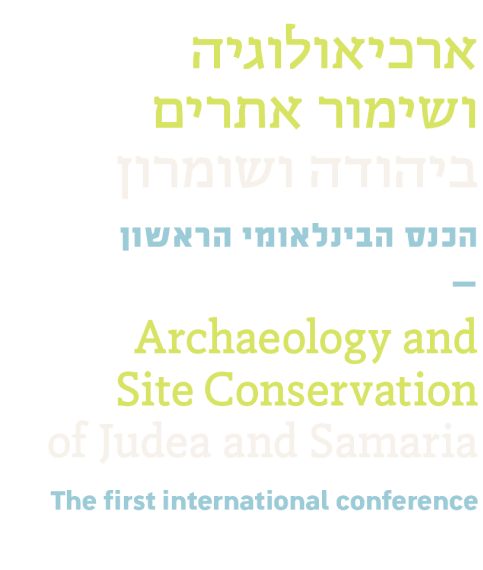
- February 10–13, 2025
- Monday-Thursday
- Dan Hotel, Jerusalem
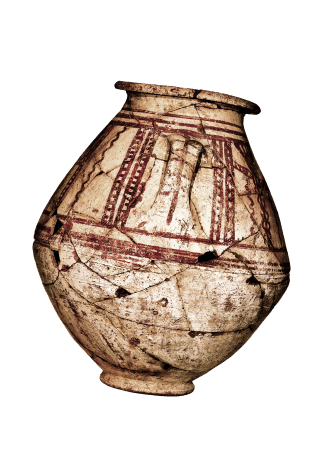
List of Sessions
The History of the Archaeological Research in Judea and Samaria // Herodium Studies // The Islamic Periods in Judea and Samaria // Heritage in Modern Times in Judea and Samaria // Excavations at Classical-Period Sites in Judea and Samaria // Samaria and Mount ‘Ebal during the Iron Age // Prehistoric Research in Judea and Samaria // Judah from the Bronze Age to the Persian Period // Southern Samaria during the Bronze and Iron Ages // Innovations in the Study of the Site and Caves of Qumran // Park Canada Sites // Hasmonean Fortresses Between the Mountain and the Desert // Community, Education and Preservation of Heritage Assets // Ethical Issues in the World of Archaeology in Judea and Samaria
Sites Presented at the conference

Program
Monday, 10/02/2025
The History of the Archaeological Research in Judea and Samaria
- Dr. Katharina Streit (Austrian Archaeological Institute; Austrian Academic of Sciences): German and Austro-Hungarian Explorations in Judea and Samaria: Ernst Sellin’s Excavations at Taanach, Shechem, and Jericho
- Dr. Jeffrey Zorn (Cornell University): Colonial Archaeology during the British Mandate in Judea and Samaria – The Case of Boulos el-`Araj
- Dr. Mordechai Lash (Ariel University): Archaeology in Judea and Samaria from the Establishment of the State of Israel till the Oslo Accords
- Eyal Freiman (Staff Officer of Archaeology): The Archaeological Activity of the Staff Officer of Archaeology in Recent Years
Tuesday, 11/02/2025
09:00 – 10:50 – Herodium Studies
Chair: Dr. Alon Shavit (Israel Institute of Archaeology)
- Dr. Roi Porat and Yaakov Kalman (Hebrew University of Jerusalem): Herodium Research in a Six-Decade Perspective
- Lena Naama Sharabi (Hebrew University of Jerusalem): Mere Decoration or Propaganda? A New Look at the wall Paintings from the Time of King Herod at Herodium
- Landscape Arch. Rona Evyasaf (Technion and University of Haifa): The Secret of the Hidden Garden: On Herod’s Royal Gardens at Herodium
- Dr. Shulamit Terem (Israel antiquities Authority): The Herodium Rebels: The Character of the Rebels at Herodium in light of the Excavations Results
- Asaf Ben-Haim (Hebrew University of Jerusalem): A Tale of Capitals: Dynamics of Cultural Change Reflected in the Architectural Decoration at Herodium
11:20 – 13:00 – The Islamic Periods in Judea and Samaria
Chair: Prof. Zohar Amar (Bar-Ilan University)
- Dr. Nikolaus Schindel (Austrian Archaeological Institute; Austrian Academy of Sciences) and Haim Shkolnik (Staff Officer of Archaeology): The Umayyad Coins of Judea and Samaria
- Dotan Traubman and Binyamin Har-Even (Staff Officer of Archaeology): Pottery Workshops from the Early Islamic Period at Nabi Samwil
- Peretz Reuven (independent scholar), Dr. Amichai Schwartz (Ariel University) and Reut Livyatan Ben-Arie (Staff Officer of Archaeology): Jāmi‘ al-Sittīn – “the Mosque of the and Sixty” next to ancient Shiloh
- Dr. Yael Gorin-Rosen (Israel Antiquities Authority) Dotan Traubman and Evgeny Aharonovich (Staff Officer of Archaeology): Hebron – The City of Glass: Discovery of a Primary and Secondary Glass Production Site
13:00 – 14:00 – Lunch Break
14:00 – 15:40 – Heritage in Modern Times in Judea and Samaria
Chair: Lee Harel (The Council for Conservation of Heritage Sites in Israel)
- Dr. Shay Bar (University of Haifa): Military Camps Discovered in the Southern Jordan Valley – Evidence of the “Battle between the Two ‘Aujahs” in World War I?
- Dr. Gad Kroizer (Bar-Ilan University): The Tegart Fortresses in Judea and Samaria
- Dr. Rivka Yermiash (Hebrew University of Jerusalem): A Marginal Area between Two Empires and Two States – The Central Jordan Valley and the Jiftlik Fort as a Case Study
- Arch. Moshe Shapira (Shapira Architects office): Site Conservation Survey at Gush Etzion
16:10 – 18:20 – Excavations at Classical-Period Sites in Judea and Samaria
Chair: Dr. Dvir Raviv (Bar-Ilan University)
- Annette Landes-Nager (Staff Officer of Archaeology and Bar-Ilan University), Uzi Greenfeld, Binyamin Har-Even (Staff Officer of Archaeology) and Prof. Boaz Zissu (Bar-Ilan University): Shavei Shomron – New Archaeological Discoveries in the Necropolis of Samaria–Sebaste
- Yaniv David Levy (Israel Antiquities Authority) and Dr. Dvir Raviv (Bar-Ilan University): A Numismatic Survey at Tell Tibnah in Southwestern Samaria
- Dr. Yuval Baruch (Israel Antiquities Authority and University of Haifa) and Dr. Anna de Vincenz (Albright Institute of Archaeological Research): Rujum el-Khamiri – A Fortified Complex from the Second Temple Period in Southern Judea
- Dr. Yoav Farhi (Hebrew University of Jerusalem), Dr. Mechael Osband (Kinneret Academic College) and Dr. Shay Bar (University of Haifa): New Study of Several “Roman Forts” in the Jordan Valley – A Preliminary Report
- Haim Shkolnik (Staff Officer of Archaeology): Some Highlights from the Renewed Excavations in the Church of Horvat Berachot (2015-2018)
Wednesday, 12/02/2025
09:00 – 10:45 – Samaria and Mount ‘Ebal during the Iron Age
Chair: Dr. Orit Peleg-Barkat (Hebrew University of Jerusalem)
- Prof. Ralph Hawkins (Averett University): The Significance of the Excavations of Adam Zertal at Mount ‘Ebal
- Dr. Shay Bar (University of Haifa): New Study on the dating of the site at Mount Ebal
- Dr. Norma Franklin (University of Haifa and Albright Institute of Archaeological Research): Reconstructing Iron Age Samaria: Insights from the Archives
- Prof. Yuval Gadot (Tel Aviv University): Between Samaria and Jerusalem and between Mount Gerizim and the Temple Mount – Questions of Hierarchy and Dominance
11:15 – 13:00 – Prehistoric Research in Judea and Samaria
Chair: Dr. Shay Bar (University of Haifa)
- Prof. Ofer Marder (Ben-Gurion University of the Negev) and Oz Varoner (Staff Officer of Archaeology): Masrek an-Najd Rock Shelter and the Late Upper Paleolithic Period of the Judean Desert – A Lost and Rediscovered Site
- Oz Varoner (Staff Officer of Archaeology), Hagay Hamer (Israel Antiquities Authority) and Prof. Ofer Marder (Ben-Gurion University of the Negev): Neolithic Sites Between Mount Hebron and the Judean Desert
- Hagay Hamer (Israel Antiquities Authority) and Prof. Ofer Marder (Ben-Gurion University of the Negev): Core Areas of Neolithic Settlement in the Northern Judean Desert in light of Excavations and A Survey of the Cliff Caves
- Dr. Yotam Asher (University of Haifa and Israel antiquities Authority), Prof. Yuval Goren (Ben-Gurion University of the Negev) and Dr. Shay Bar (University of Haifa): Chalcolithic Copper Industry in Fazael, Southern Levant
13:00 – 14:00 – Lunch break
14:00 – 15:40 – Judah from the Bronze Age to the Persian Period
Chair: Prof. Amihai Mazar (Hebrew University of Jerusalem)
- Prof. Jeffrey R. Chadwick (Brigham Young University): The American Expedition to Hebron 1964-1966
- Dr. Kyle Keimer (Macquarie University): Tell en-Nasbeh in the Iron Age I
- Eyal Freiman (Archaeology): Settlement Patterns during the Iron Age in the Judean Highlands
- Yodan Fleitman-Maman, Oz Varoner and Chaim Cohen (Staff Officer of Archaeology): Beitar Illit North – Preliminary Observations from a Late Iron Age and Early Persian Period Site
16:40 – 18:20 – Southern Samaria during the Bronze and Iron Ages
Chair: Prof. Itzhaq Shai (Ariel University)
- Dr. Jon Ross (Hebrew University of Jerusalem), Tiffany Okaluk, Benjamin Yang (Ariel University), Oz Varoner (Staff Officer of Archaeology) and Dr. Aharon Tavger (Staff Officer of Archaeology and Ariel University): A Forgotten Past in the Shadow of Shiloh: The Early Bronze Age Excavations at Kh. er-Rafid
- Prof. Haskel J. Greenfield (University of Manitoba), Jordan McClinton (Veritas International University), Abigail Van Huss (Ariel University and Associates for Biblical Research), Dr. Liora Freud (Tel Aviv University), Dr. Aharon Tavger (Staff Officer of Archaeology) and Prof. Scott Stripling (The Bible Seminary): Zooarchaeological and Archaeological Research of the Late Bronze Age Favissa at Tel Shiloh: Some New Perspectives
- Prof. David Ben-Shlomo (Ariel University): Excavations at Kh. ‘Aujah el-Foqa in the Jordan Valley
- Dr. Aharon Tavger (Staff Officer of Archaeology and Ariel University), Binyamin Har-Even and Evgeny Aharonovich (Staff Officer of Archaeology): Survey and Trial Excavation at Elevation Point 914 – Could This Be Bethel’s Sanctuary?
- Dr. Tzilla Eshel, Dr. Iris Groman-Yaroslavski and Dr. Shay Bar (University of Haifa): The silver Hoard from Mras ed-Din
Thursday, 13/02/2025
09:00 – 10:45 – Innovations in the Study of the Site and Caves of Qumran
Chair: Prof. Yonatan Adler (Ariel University)
- Prof. Marcello Fidanzio (Università della Svizzera Italiana): How and Why the Dead Sea Scrolls were Deposited in the Natural Caves Near Qumran?
- Prof. Dennis Mizzi (University of Malta): Dating the Scroll Deposits in the Qumran Caves: Possibilities and Limitations
- Chaim Cohen (Staff Officer of Archaeology), Hagay Hamer, Oriya Amichay, Amir Ganor and Dr. Eitan Klein (Israel Antiquities Authority): Life in the Qumran Caves – Preliminary Results from the Renewed Survey
- Dr. Oren Gutfeld (Hebrew University of Jerusalem): On Tunnels and Caves – New Insights from the Hebrew University Excavations at the Cliffs of Qumran
11:15 – 13:00 – Park Canada Sites
Chair: Prof. Alexander Fantalkin (Tel Aviv University)
- Prof. Oren Tal (Tel Aviv University): Profs. Gichon and Fischer’s Excavations at Kh. el-‘Aqd – Hellenistic and Roman Stronghold in Western Judea – New Insights as Part of the Publication of the Final Report
- Evgeny Aharonovich (Staff Officer of Archaeology), Michal Haber (Hebrew University of Jerusalem) and Hananya Hizmi (Staff Officer of Archaeology): Kh. el-‘Aqd – The Renewed Excavations by the Staff Officer of Archaeology – The Story of a Fortified Settlement
- Barnea Levi Selavan (Tel Aviv University): Emmaus in Jewish and External Historical Sources
- Dr. Arleta Kowalewska, Prof. Oren Tal and Prof. Alexander Fantalkin (Tel Aviv University): Prof. Gichon’s Excavations at the Roman Bathhouse at Emmaus – New Insights as Part of the Preparation for the Publication of the Final Report and the Plans for the Renewed Excavations
13:00 – 14:00 – Lunch Break
14:00 – 15:40 – Hasmonean Fortresses Between the Mountain and the Desert
Chair: Dr. Orit Peleg-Barkat (Hebrew University of Jerusalem)
- Prof. Esther Eshel (Bar-Ilan University), Prof. Haggai Misgav (Hebrew University of Jerusalem) and Dr. Doron Sar-Avi (Hertzog College): Inscriptions in the Desert Fortresses of Judea from the Second Temple Period
- Michal Haber and Dr. Oren Gutfeld (Hebrew University of Jerusalem): In the Wilderness of Judah – Preliminary Results from the Hyrcania Fortress Excavation Project
- Eitan Mir (Staff Officer of Archaeology and Ben-Gurion University of the Negev): Pesach Bar-Adon’s Excavations at Kh. Mazin -Shiphouse and Tower in the late Hellenistic and Early Roman Periods
- Dr. Dvir Raviv (Bar-Ilan University): New Insights in the Study of Hasmonean-Herodian Fortresses in Judea and Samaria
16:10 – 17:50 – Community, Education and Preservation of Heritage Assets
Chair: Netanel Mazeh (Director at the Ministry of Heritage)
- Dr. Avner Hilman (Staff Officer of Archaeology): Conservation of Heritage Sites in Judea and Samaria
- Harel Gutfreund-Nahum (Ariel University): “Excavations and Communities” – Volunteering in Archaeological Excavations in Judea and Samaria
- Reut Livyatan Ben-Arie (Staff Officer of Archaeology): Excavations in Memory of Major Shilo Har-Even at Tel Shiloh
- Tal Orenstein and Evgeny Aharonovich (Staff Officer of Archaeology): Excavations in Memory of Major Shilo Har-Even at Tel Shiloh
18:20 – 20:30 – Festive Concluding Session:
Ethical Issues in the World of Archaeology in Judea and Samaria
Guest Lecture:
Dr. Tina L. Greenfield (University of Winnipeg): As the Cradle Crumbles: Islamic State, the Destruction of Archaeological sites, and Saving Cultural Heritage in Iraq and Syria
Concluding Lecture:
Binyamin Har-Even (Staff Officer of Archaeology): Judea and Samaria – A Look at the Present and Thoughts for the Future
Professional Panel with the Participation of:
- Prof. Yonatan Adler (Ariel University)
- Prof. Adi Erlich (University of Haifa)
- Dr. Liora Kolska-Horwitz (Hebrew University of Jerusalem)
- Prof. Aren Maeir (Bar-Ilan University)
Wednesday, 12/02/2025 Exclusive Tour: Discoveries and Updates at the Good Samaritan Sites
8:45 – 12:45 | Alongside the conference lectures, we invite the general public to join a guided tour of the Good Samaritan sites, focusing on recent discoveries and new research that have not yet been shared with the public.
Tour Highlights:
The Herodian Palace – Excavated by the late Yuval Peleg, currently undergoing conservation and restoration.
The Crusader Fortress – A historical stronghold known from historical sources, currently under excavation.
The Good Samaritan Museum – Recently acquired a new mosaic from the Staff Officer for Archaeology excavations at Khirbet al-Fula.
- Advance registration required – limited spots available!
- Departure and return: Dan Jerusalem Hotel
- Transportation will be provided for participants.
- Please bring closed shoes and a hat
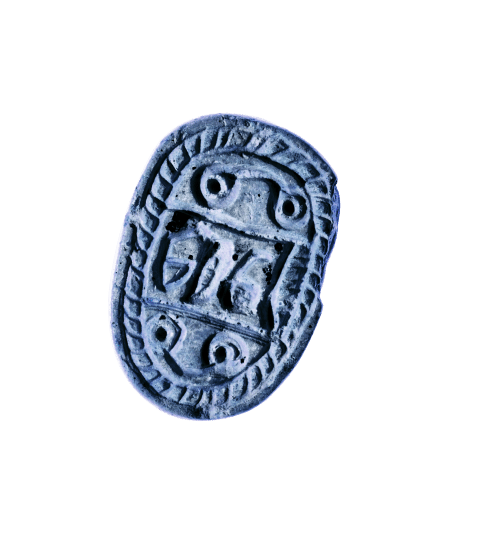
Presenters
Adi Erlich
Festive Concluding Session: Ethical Issues in the World of Archaeology in Judea and Samaria
Adi Erlich
Thu, 13.2, Concluding Session
Aharon Tavger
Archaeological Survey and a Trail Excavation at the Site in Elevation Point (E.P.) 914 – Is this really the Sanctuary of Bethel?
Aharon Tavger, Binyamin Har-Even and Evgeny Aharonovich
Wed, 12.2, Session IV
During an archaeological survey led by Israel Finkelstein in the early 1980s, an unnamed site was discovered east of the village of Beitin, situated at an elevation point of 914 meters above sea level. While the survey report mentioned architectural remains, the site was classified primarily as “scattered sherds” from the Middle Bronze Age and was not assigned significant importance. As part of the recent New South Samaria Survey, conducted by Ariel and Bar-Ilan Universities in collaboration with the Staff Officer for Archaeology, the site was re-examined and found to have been a Middle Bronze Age settlement, with an additional scatter of Iron Age II pottery. A small-scale excavation that followed the survey confirmed its results. The results of the excavation suggest that the site comprises a flat plateau at the summit of the hill, where activity took place during the Iron Age II, alongside structures from the Middle Bronze Age on the northern slope. In this lecture, we will present the findings from both the survey and excavation and propose a possible connection between this site and the biblical tradition concerning the sanctuary of the biblical city of Bethel.
Alexander Fantalkin
Park Canada Sites
Alexander Fantalkin (chair of session)
Thu, 13.2, Session II
Alon Shavit
Herodium Studies
Alon Shavit (chair of session)
Tue, 11.2, Session I
Amihai Mazar
Judah from the Bronze Age to the Persian Period
Amihai Mazar (chair of session)
Wed, 12.2, Session III
Annette Landes-Nager
Shavei Shomron – New Archaeological Discoveries in the Necropolis of Samaria–Sebaste
Annette Landes-Nager, Uzi Greenfeld, Binyamin Har-Even and Boaz Zissu
Tue, 11.2, Session IV
In August-September 2023, a salvage excavation was conducted on the western outskirts of the Shavei Shomron settlement, south of the ancient city of Samaria–Sebaste, as part of paving access roads to the settlement. A burial area was uncovered, containing two rock-cut tombs dating to Iron Age IIA and the Late Roman period, as well as cist tombs dating to the Early Islamic period, and an entrance to an unfinished additional rock-cut tomb. Moreover, a stone quarry and rock-cut water cisterns were discovered. The Iron Age tomb was accessed by a step descending into a burial chamber featuring a standing pit at its center, surrounded by three benches to the north, east, and south. Within one of the benches, a small burial trough was carved, containing articulated human remains and a carnelian bead. The tomb also yielded scattered human bones, numerous fragments of red and black-painted and burnished pottery, and shells. The Late Roman tomb consists of a rock-cut elaborate room with kokhim and a painted burial chamber. The entrance leads to a step descending into a standing pit carved at the center of the room. Nine kokhim were cut into plastered walls, some of which contained articulated skeletons and burial offerings. The burial chamber carved into the northern wall opposite the entrance, is decorated with colorful wall paintings. The motifs depict plants, mammals, birds, reptiles, geometric patterns, and two human figures – a woman and a child. The design of the burial chamber and the artistic quality of the decorations suggest that the individuals buried there belonged to a wealthy pagan family residing in the region during this period. Adjacent to the caves, a field of cist tombs from the Early Islamic period was discovered, containing nine tombs arranged in a row running east-west. Stone markers were placed at the western ends of the tombs to denote the head of the deceased. The arrangement of the tombs reflects burial practices typical of the Muslim population. These newly discovered tombs join previous finds at the site and its surroundings, contributing to the understanding of the extent of the necropolis of the ancient city of Shomron – Samaria – Sebaste, its burial practices, and cultural characteristics across different periods.
Aren Maeir
Festive Concluding Session: Ethical Issues in the World of Archaeology in Judea and Samaria
Aren Maeir
Thu, 13.2, Concluding Session
Arleta Kowalewska
Prof. Gichon’s Excavations at the Roman Bathhouse at Emmaus – New Insights as Part of the Preparation for the Publication of the Final Report and the Plans for the Renewed Excavations
Arleta Kowalewska, Oren Tal and Alexander Fantalkin
Thu, 13.2, Session II
Between 1972 and 1997, Prof. Gichon carried out a series of surveys and excavations at the building in the western part of Canada Park, initially identified as the Tomb of Sheikh Ubayd. These investigations revealed a well-preserved Roman bathhouse with at least two heated halls, as well as unheated and service spaces. Despite the prospective significance of this discovery, the excavation results have so far only been published in short preliminary descriptions. The bathhouse was constructed using opus quadratum, decorated with imported stone slabs, and equipped with glass windowpanes, all typical features of an urban bathing complex of the Roman and Byzantine periods. The bathhouse was probably built in the third century CE as part of the re-foundation of Emmaus as Nicopolis by Elagabalus. Two points of particular interest set this bathhouse apart, among the 190 known remains of bathhouses in Syria-Palaestina, as one of the few crucial buildings for the study of Roman-style baths: 1) its still-standing roofing, including variant vaults and domes; and 2) its in-situ hypocaust made with typically regional ceramic building materials. Ongoing works on legacy material and reinvestigation with pinpointed probes, modern documentation, as well as contemporary analytical techniques, will not only put this significant building at the center of scholarly debate but also will help present it meaningfully to non-professional visitors.
Asaf Ben-Haim
A Tale of Capitals: Dynamics of Cultural Change Reflected in the Architectural Decoration at Herodium
Asaf Ben-Haim
Tue, 11.2, Session I
Herodium serves as a wonderful laboratory for studying stone decorations and the artistic carving industry that Herod harnessed and developed for his needs over the many years he operated at the site. After decades of excavations, the architectural pieces were compiled into a single database, and with the help of 3D scanning, computational processing of findings, and comparative research, the sources of influence of the king’s artists were examined, reconstruction proposals were assembled, and the work process of the stone carvers was analyzed.
Avner Hilman
Conservation of Heritage Sites throughout Judea and Samaria
Avner Hilman
Thu, 13.2, Session IV
In recent years, the Conservation Department of the Staff Officer of Archaeology of the Civil Administration in Judea and Samaria has been involved in preserving various sites. A significant number of sites have entered a systematic process of treatment and maintenance conservation, spanning several years, including Nabi Samwil, Qumran, and Lower Herodium. Other sites, such as Shiloh and Kh.t Jama’in, have undergone comprehensive conservation treatment. Aqueducts throughout Judea and Samaria have also required extensive treatment, including exposure, conservation, and restoration, such as the aqueduct in Wadi kelt, as well as the Biyar and ‘Arrub aqueducts within the Efrat Council area. The Conservation Department is sometimes required to provide urgent treatment to findings. This lecture will discuss these important activities throughout Judea and Samaria.
Members of the Academic Committee
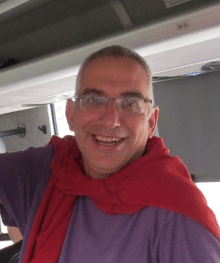
Prof. Ofer Marder
Ben-Gurion University of the Negev

Dr. Alon Shavit
Israel Institute of Archaeology

Dr. Dvir Raviv
Bar-Ilan University
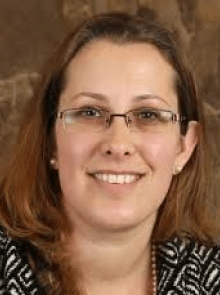
Dr. Orit Peleg-Barkat
Hebrew University of Jerusalem

Dr. Aharon Tavger
Staff Officer of Archaeology in the Civil Administration
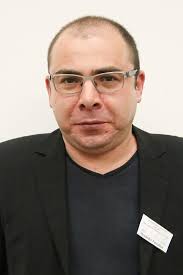
Prof. Alexander Fantalkin
Tel Aviv University
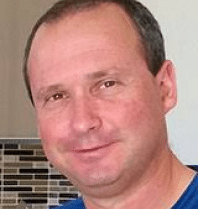
Dr. Shay Bar
University of Haifa

Prof. Yonatan Adler
Ariel University

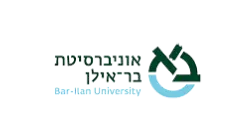

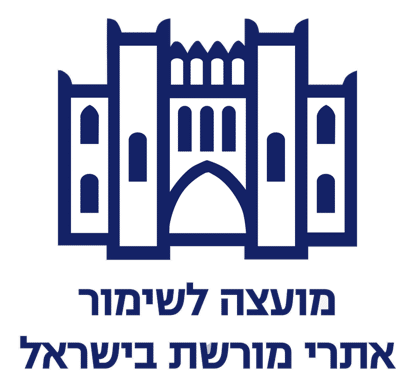
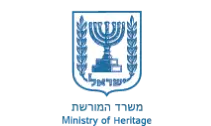
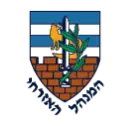

עיצוב ופיתוח: נאומבורג ודרורי

